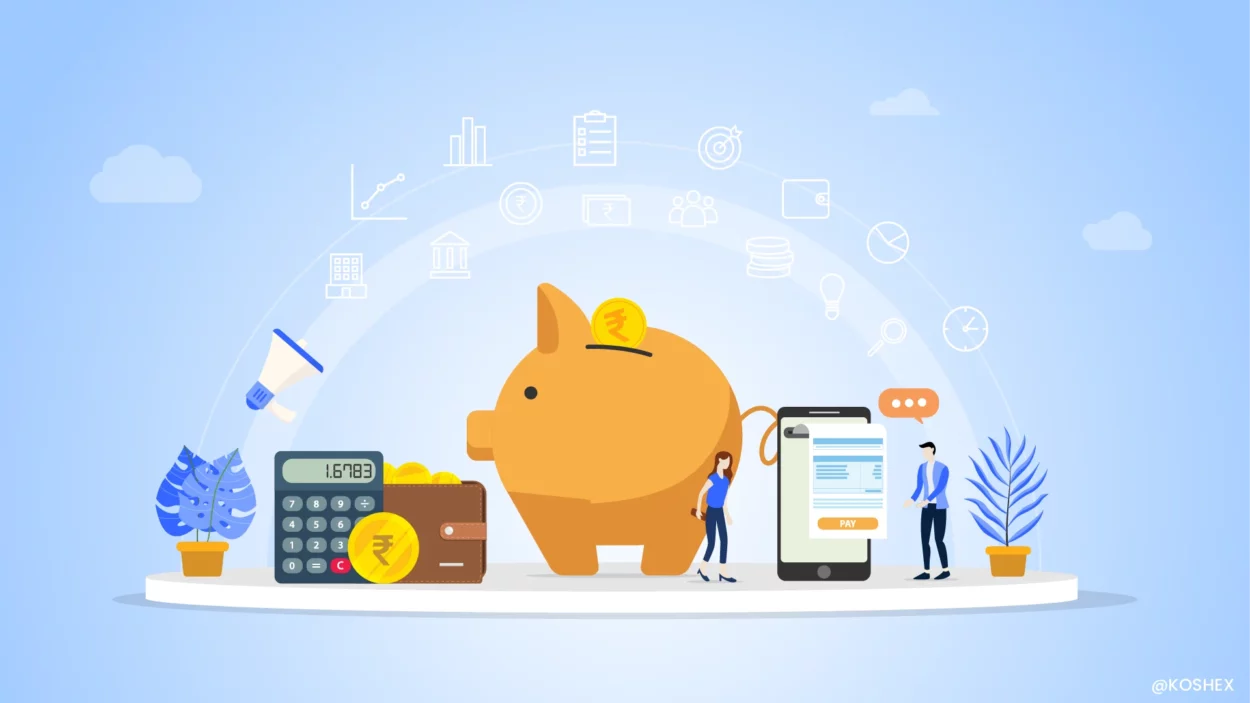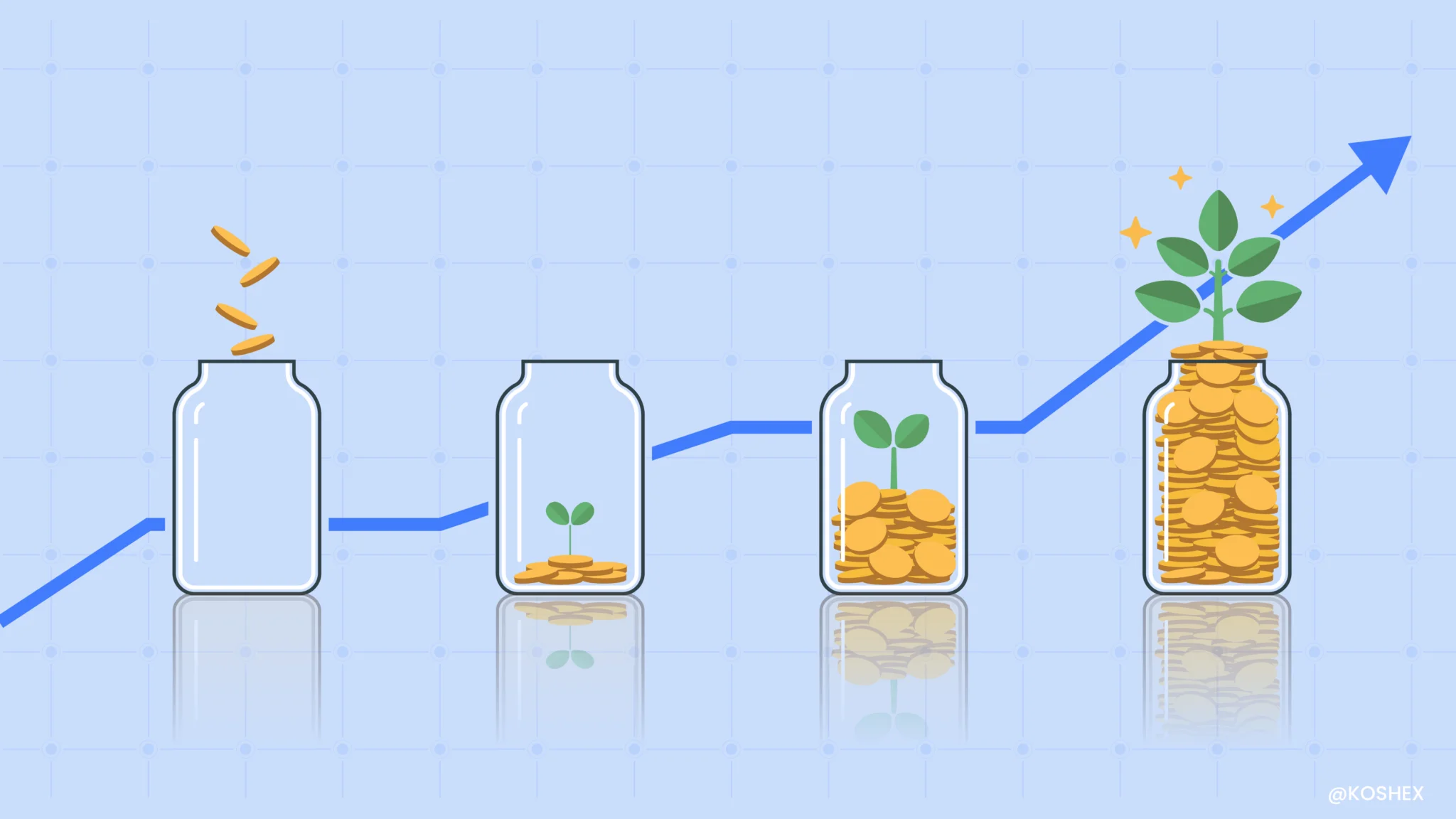What is an Investment?
An asset that is created to grow your money is an investment. In other words, an investment is something that appreciates or helps you generate income over time.
You can use the wealth created via investments for a variety of purposes. For instance, you can use it to fulfill your financial goals like meeting shortages, fuelling your retirement fund, repaying loans, managing tuition fees, and more.
When you save, you simply put aside a part of your income to keep over time. However, its appreciation of value remains more or less stagnant. As a matter of fact, money sitting idly in your safe loses its value over time due to inflation.
Understanding investment is incomplete unless you understand the direct relationship between risk and returns. The simple mantra here is that the higher the risk involved, the greater can be your returns.
The biggest reason that you must consider an investment is to generate an alternate stream of income.
This can happen in two ways:
- You can choose to invest in an asset that is saleable, like real estate or gold. When you put money into these assets with a long-term view of selling them, the profit becomes your income.
- The second way is to earn steady and assured returns on your investments. This way, the accumulation of returns over time becomes your income.
To put it concisely, investment is all about putting your money into assets that will appreciate in the future. Moreover, it also includes plans that aid in producing an income over time.
Broad Categories for Investment
All investments fall under the below broad categories. It is advisable to distribute your savings across them as long as they align with your goals and personality.
1. Ownership Investments
As the name suggests, these assets are purchased and owned by the investor. Stocks, bullion and real estate properties fall under this category. Funding a business and getting a stake is also an example of such investments.
2. Lending Investments
When you put your money into lending instruments, you’re behaving like a bank. Savings accounts, and government, and corporate bonds are all examples of lending instruments. The money that you keep in your savings account is essentially a loan you offer to your bank. While the bank can use this money to fund loans to other customers, it gives you an interest in return.
3. Cash Equivalents
These assets can be easily liquidated or converted into cash. Money market instruments are valid examples of such cash-equivalent investments. They generally offer low returns, but correspondingly, also reduce the risk associated with your hard-earned money.
Investment Objectives
Before you decide to go ahead with a particular investment plan, it is imperative to understand the reason why you want to invest in the first place.
With clear investment objectives, choosing the right instrument will become easier. Given below are a few investment objectives:
1. Safekeeping
Saving cash and jewelry at your home is not only unsafe but can also give you sleepless nights. It may make your movement restricted and any untoward incident may erode your hard-earned money.
It is where investments can make a difference. When you park funds in strategic instruments, you ensure that your savings are safe.
You can choose government bonds, fixed deposits, or even regular savings account to keep your money safe.
2. Growth
Money sitting idly in your savings account can lose its value in the future if the rate of return does not exceed the rate of inflation. You want the money to grow to fulfill your dreams in the future. It happens little by little when you put your savings into different types of investment options. When you begin early, you also benefit from the power of compounding. To manage your long-term big-ticket expenses, it is advisable to look for high-return investment options like mutual funds, real estate, equity, or commodities. The risk that is associated with such options might be high, but these instruments offer significant returns.
3. Secondary Income
Investments can generate a primary or secondary stream of income for you. There are several people who earn a considerable income by investing in well-researched stocks. To earn a secondary income, you can consider different types of investments like fixed deposits or stocks of companies that give dividends consistently. It is essential to consider such investments in your portfolio as they can help you pay for everyday expenses after retirement.
4. Minimising Tax Burden
The biggest incentive you may want to consider investing your money is to get tax benefits offered by some of the investment instruments. For instance, your investment in tools like PPFs, ULIPs, or ELSS (Equity Linked Savings Schemes) can help you in reducing your taxable income. It has the cumulative impact of bringing down your overall tax liability and securing more money for your future.
5. Retirement Plan
Unlike the previous generations, the current generation will not have the cushion of a pension in the golden years of life. Thus, it becomes all the more important to think about the financial independence of your future self. In most cases, the option of depending on children is not viable or smart. As you may not be able to go on working throughout your life, the best option is to create a retirement fund today. When you invest your money into the right type of investment, you can allow your funds to grow enough to sustain your lifestyle after retirement.
6. Meeting Financial Goals
Investing is the solution to achieve your long-term and short-term financial goals without too much trouble or stress. Some types of investment options, come with high liquidity and short lock-in periods. They are ideal if you do not wish to lock your money for a longer duration or want to save up for short-term targets like funding your home improvements or creating a fund for emergencies. Some other investment options that come with a longer lock-in period are ideal for achieving your long-term financial goals like overseas education of your children, their weddings, or your post-retirement life.
Types of Investments
Let’s take a look at the different types of investment options in detail. It is advisable to invest in a couple of them to make a healthy portfolio and earn decent returns in the long term.
- Stocks: Although, they are considered high-risk investment options, stocks have historically given satisfactory gains in the long term. For instance, Nifty has given a return of 12.5% in the last 15 years, which is 5.5% higher than the inflation rate of 7%.
To earn good returns from the stock market, you need to be patient and have the mental willpower to withstand the market lows. It is cyclical and always rises after seeing a slump. - Bonds: If the ups and downs of the stock market do not align with your personality, you can invest your money in government or corporate bonds. Although they may not give you very high returns, they are safe.
- Mutual Funds: This asset is the perfect option if the significant returns of the stock market seem appealing to you but you do not have the time or knowledge to track stocks. Mutual funds are managed by fund managers, who are the experts in this field and can help in reducing your risk. You can either invest in a lump sum or go with SIPs to earn gains from the stock market.
- Fixed Deposits: Perhaps the popular choice of investment option in India, fixed deposits are one of the easiest ways to earn returns. The best part is that you can put any amount in it and can open it from the comfort of your home.
- ULIP: Unit Linked Insurance Plans or ULIPs are a type of investment instrument that provides you with the benefit of life insurance and fixed returns. A portion of the money that you invest in ULIPs is allocated to your investment fund and helps you enjoy market-linked returns. Moreover, ULIPs can also offer tax-saving benefits of up to INR 1.5 lakhs as per Section 80C.
- Public Provident Fund (PPF): PPF or public provident fund is a pretty straightforward investment. It is a government-initiated savings scheme where you are required to lock your funds for a specific period to earn interest and returns. The current rate of interest, starting October 1st, 2018, for PPF stands at 8%.
- Real Estate: When you put your money in a plot of land or an apartment, it becomes an investment only when you do not want to reside in it. Needless to say, it may take years before you can buy a second property but the returns can be as high as 10-11% every year.
Significance of Investing
One important investment objective is creating a financial reserve. By taking out a portion of your income each month to create this reserve, you are ensuring the safety and well-being of yourself and your loved ones. Things like medical emergencies, shortage in savings, or fulfilling other financial obligations can arise at any stage in life. Investments can not only protect your interests at such challenging times but also grow your wealth over time.
Go through the various options available, do proper research and choose an investment option that will suit you best!








Leave a Comment